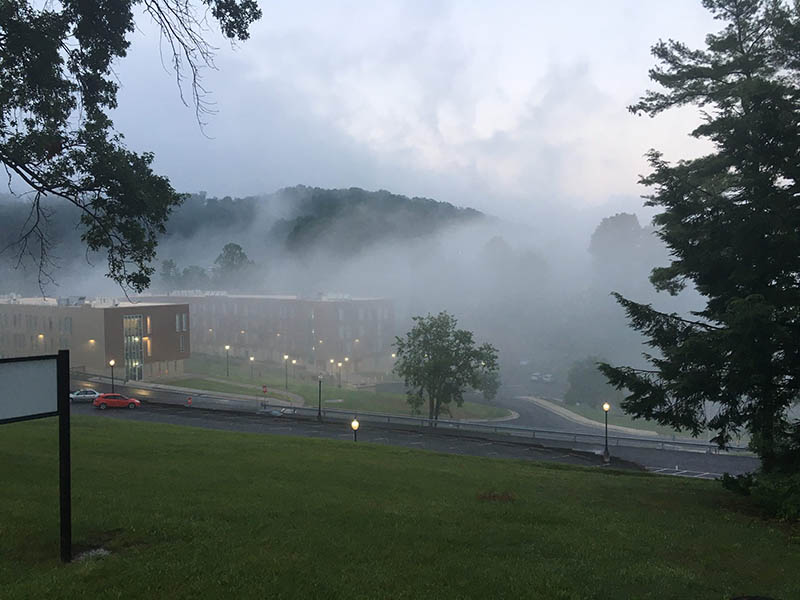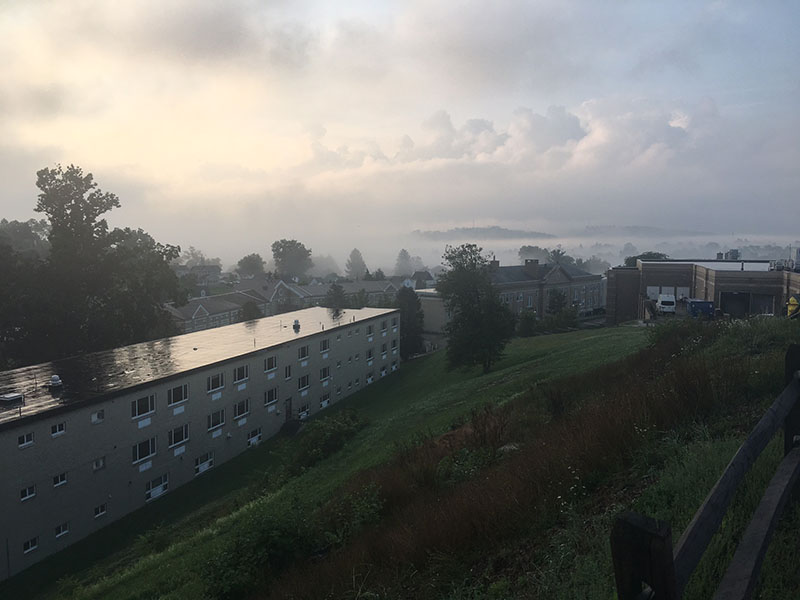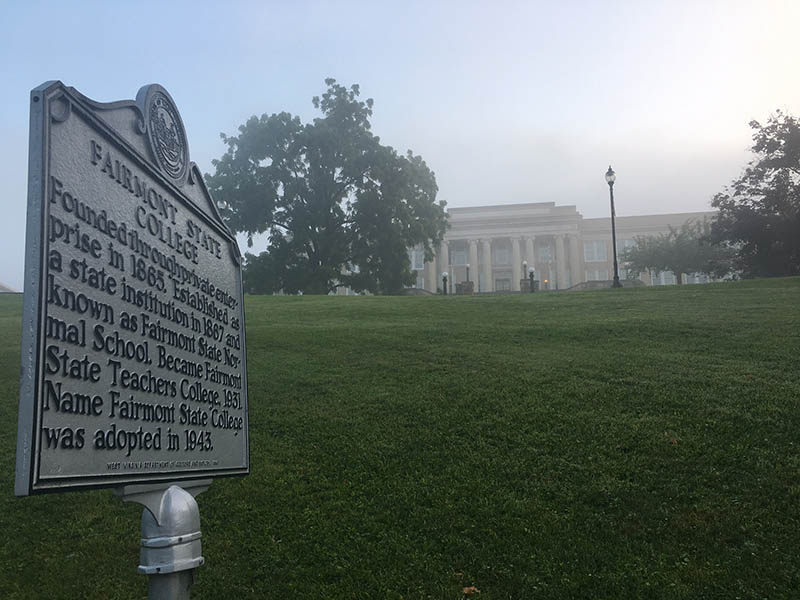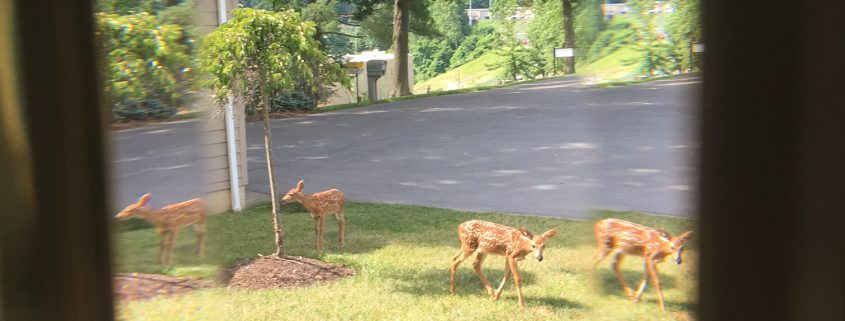An Ecosystems Approach to My Interim Presidency
My approach to learning and evaluating, and then developing recommendations for any enterprise varies little from how I would have assessed (and then managed) a wooded property when I practiced forestry. I have been retained as Interim President to learn, evaluate, and make recommendations here at Fairmont State University (FSU).
A Broad Overview and Context
A physical and biological overview: 120 acres (our FSU campus) in north-central West Virginia’s Allegheny Plateau region. The Allegheny Mountain section (highlands that include some of my favorite places in the eastern US) lies one county to our east. Beyond that, the Ridge and Valley province where I spent my first 18 years. This FSU location places me in a natural ecosystem much like the home country that shaped and inspired me. The social, cultural, and economic elements are also not much different. In many ways, I am home… which reduces the slope of my learning curve. Not the steeper climb I would have faced had this been a regional public university in Arizona (or some such location distinctly different from my region of familiarity).
I’ll begin with the critters who frequent my mid-campus Shaw House (President’s residence) environs: a doe and two fawns (see Featured Image), ground hog, two rabbits, chipmunks, raccoons, crows, a red-shouldered hawk, cardinals, sparrows, and many other feathered friends. We are surrounded by campus, yet Nature abounds. Likewise, within our Shaw House acre or so: white pine, Scots pine, hemlock, red oak, red and sugar maple, walnut, locust, various familiar ornamental trees and shrubs. A rich and satisfying natural environment. Yet that tells me little about FSU. Sure, I’m not the first person associated with the university to observe its special natural character. Here’s a catalog excerpt from 150 years ago, emphasizing the wonderful natural setting: “in the midst of a landscape of surprising healthfulness, beauty, and loveliness.”

We absolutely do occupy a hillside, climbing from the Locust Avenue entrance (elevation at ~950 feet above sea level) on the south side to beyond the athletic fields and physical plant to the north (at ~1,150 feet). My GPS confirmed the modest 200-foot relief; walking from Locust to the top demands more work than I would expect from 200 feet. I visited the Education building last week, entering the first floor at ground level (south entrance), taking the open atrium stairs to the third, and noticing that I emerged at ground level on the north-side. I am told we remove winter’s snow from several thousand external stairs!

Parents, students, alumni, faculty, and staff view the campus, its presentation, and the surroundings quite favorably. Happy campers by and large. Yeah, I know, some lament the hills and stairs. I can just imagine the way-too-steep ice rink with freezing rain, sleet, and snow. I’m assured physical plant manages those conditions well. Overall, I view the institution’s location (topography, climate, natural amenities, landscaping, buildings, and facilities) very favorably. We are blessed as well to be, in some ways, centrally isolated — within four hours’ drive of Baltimore, Washington, Pittsburgh, Columbus, and Charleston. Yet we have immediate access to Wild, Wonderful West Virginia… Almost Heaven!
A Special Institution with Promise and Potential
Our university organism is solid, competitive, and sustainable, yet evidences potential beyond realization. We have some very good programs that could be excellent. Some areas where we could (and must) build enrollment. Some partnerships we could forge, strengthen, and exploit. Some resources and bounty we could more aggressively pursue and gather. Some strong elements we can elevate. Some process/practice and organizational adjustments and personnel shifts are in order. We also have quite a few wonderful stories we are not telling well. In fact, I’m not sure we know the depth and breadth of those stories. After all, I have said repeatedly, an institution like ours is more than its buildings, classrooms, labs, programs, staff, faculty, and students… much more. We are a collection of stories, stretching across time and extending through the university’s ages, and beyond to no future date certain. Of greatest interest, impact, and potency are the tales of tradition, of the living, and those to come. The mighty oak is, too, a collection of stories. Height, diameter, crown spread, condition of its wood, dominance within the forest, old wounds, breakage, and the record of its annual rings. I can examine a tree, its location, its competitors, and its annual rings, and re-construct its story. The timeline at FSU matches the mighty oak (or the mighty walnut framing Hardway Hall).

Who are the oak’s competitors… its symbionts, like mycorrhizae? Its exposure to agents of change and potential destruction. Consumers (insects and fungi). Factors of productivity where it resides and is rooted. Exposure to risks — wind, ice, heavy snow loads. What can we alter through forestry to benefit the oak? The same kinds of considerations apply to assessing FSU. I examine the forest with eyes wide open, head clear, and a full checklist of elements I must examine, assess, and affect. I am applying that same kind of wisdom and practice here at Fairmont State. I’m bringing fresh (and informed) eyes. Too often, those members of a university community (or any enterprise) who are deeply (in place and time) embedded at an institution are not able to look — truly look — the way that I do through eyes not dimmed by familiarity and comfort.
No Time to Dally!
I am taking that same ecosystem approach here at FSU. We must look, see, feel, and act. Those who do not know (or refuse to discover), or are unable to discern the stories, may be doomed to accepting or ensuring mediocrity. Comfort dampens aspiration. Satisfaction and contentment do not lift the bar. FSU is not mediocre, yet it does fall short of its potential. The institution did not hire me to coast through six months, leaving critical evaluation, necessary adjustments, and tough decisions to the permanent president who will follow my term. I intend to report my findings and present my action-recommendations to the Board. They will direct me to act… or not. I am publishing this Blog on my 18th day in service to FSU. Normally, were this the beginning of a 4-7-year presidency, 18 days would be enough time to dip my toes into the water, before wading into the shallow end of the pool, and then eventually swimming. Eighteen days is 0.7 percent of seven years… yet it is 10 percent of six months!
After just 18 days of total immersion, I believe that my recommendations are 85 percent complete. Eighteen days is an ample immersion period for the kind of consulting I would undertake for a business/organization and its extant CEO and leadership team. This time, however, I will be leading the enterprise while implementing the recommendations the Board adopts. Because I am now ten percent of the way into my tenure as interim, I/we do not have the luxury of time. Not if we are to collectively set the stage for the next president to hit the ground surging ahead.
I will present recommendations to the Board at its July 20 full-day retreat (11 percent in!). I appreciate and relish the ecosystem within which FSU operates. In forestry parlance, we can increase forest productivity here at FSU. The future can be one of rising to our potential. I am excited by what I see and envision. Much that is good (and great!) lies ahead. I am eager to help lead the way.
Featured Image: Two fawns photographed through the beveled glass on the Shaw House front door. Hence the double image of each twin.



